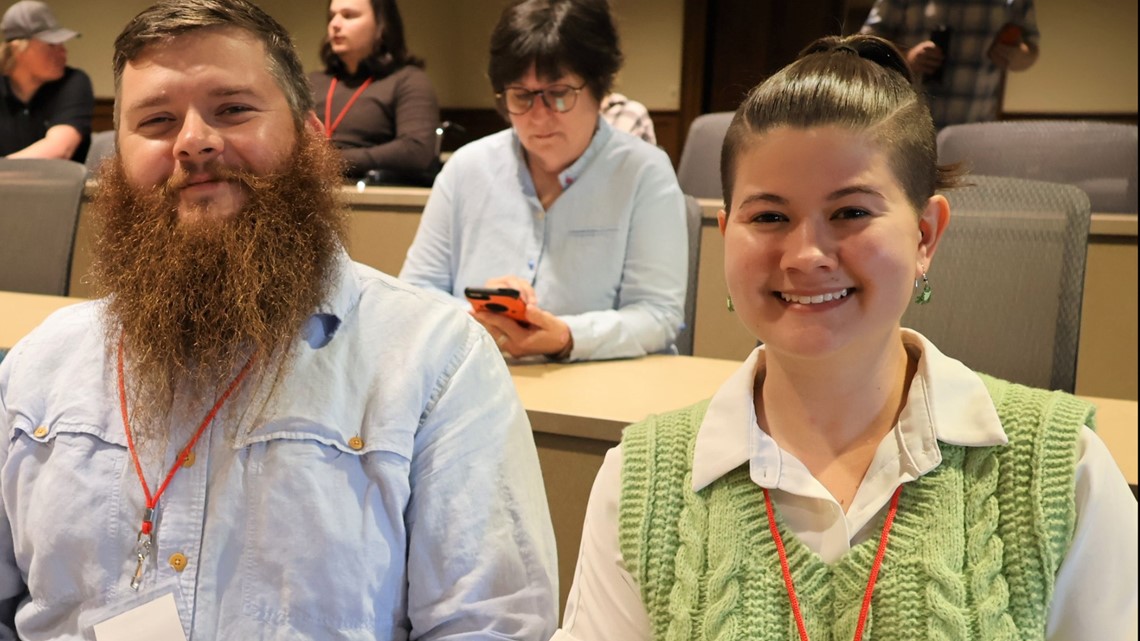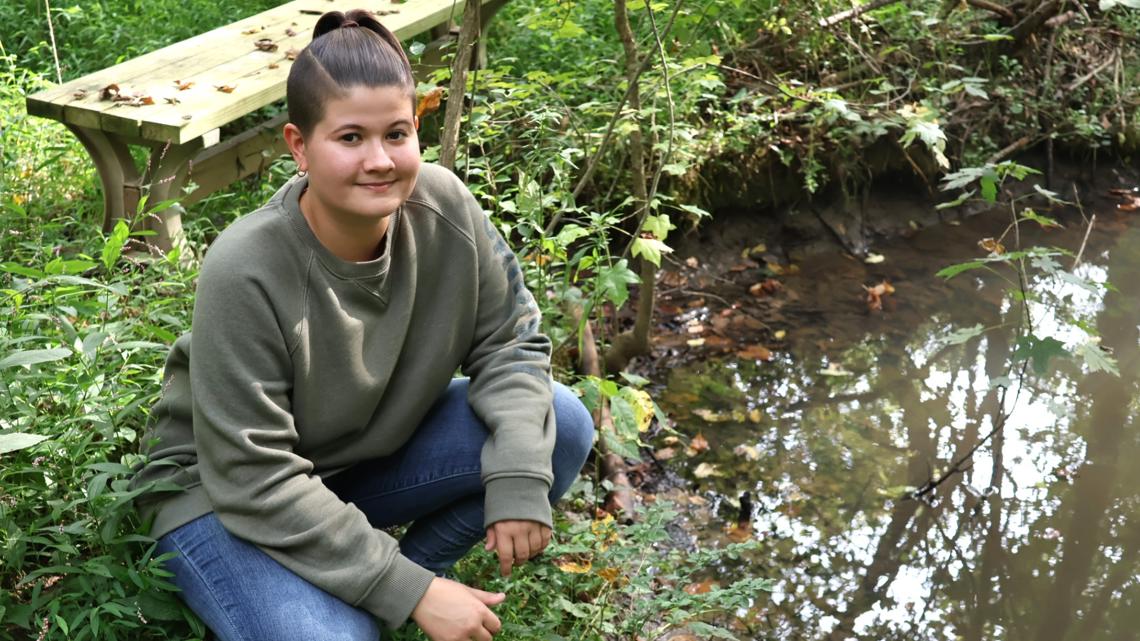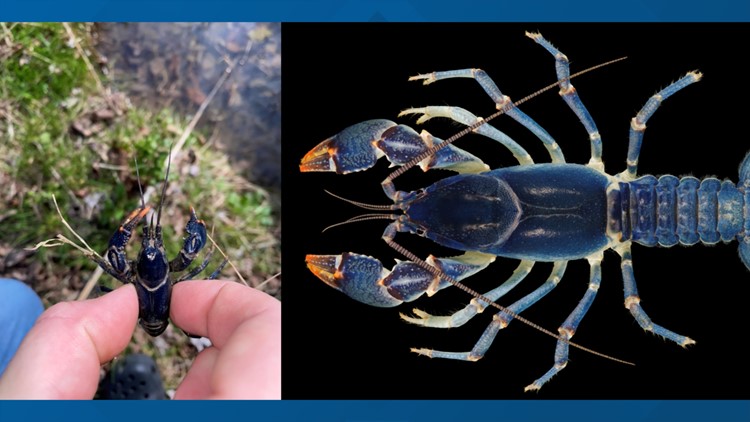GREENEVILLE, Tenn. — The Tennessee Wildlife Resources Agency is examining whether a blue crayfish found by Tusculum University students on campus is actually a new species. It could take up to three years to determine if it actually is a new species.
The TWRA said Joe Calloway and Breanna Mathes captured the animal on the Tusculum Nature Trail on campus over the spring. Following that discovery, the TWRA started to get involved and now, a detailed analysis will determine whether the crayfish is something unique, according to a release from the TWRA.
“In April, we surveyed that part of the campus and caught a good series of specimens,” said Carl Williams, a TWRA wildlife technician. “We molted them out, and they were pretty unique looking. They were definitely not what you would find on the Cumberland Plateau or in the Blue Ridge, so that gave us a suspicion these were probably something new."
The TWRA collected tissues from the specimens they found along with other crayfish populations in the state and will send those samples to Yale University for DNA extraction and data analysis. The TWRA said the entire process could take up to three years to complete.


Calloway and Mathes were on the nature trail on Feb. 21 looking for frogs as part of a class assignment — a few months before Calloway would graduate from the university with a bachelor's degree in environmental science. Mathes is a senior also pursuing an environmental science degree, as well as a biology degree.
Both students said they were immediately interested because of the specimens' colors. The TWRA said neither had seen a blue crayfish before. They also said the specimens were found in a pond instead of a creek, where crayfish are usually found.
They captured the blue creature, took a photo, and released it back into the wild. Calloway sent the photo to Williams who then went to campus to see the crayfish. The students captured one of the creatures and stored it in the university's environmental science lab ahead of Williams' visit.
While capturing it, the TWRA also said they found out the crayfish burrowed.


“This was a burrowing crayfish, which is difficult to catch because it usually spends daylight hours underground,” Calloway said. “We were fortunate to be in the right spot to capture it when it came out so we could provide it to the TWRA.”
The TWRA said years ago, agents conducted crayfish sampling on U.S. Forest Service property in the Paint Creek watershed of Greene County. There, they said they saw a blue crayfish that looked similar, but still distinct, from the students' find.
“What Joe and Breanna found looks similar to that but not exactly,” Williams said. “It could be just a little bit of variation between populations, or they could be two different things. That’s what was going through my mind – we’ve either expanded that population from the Paint Creek watershed to the Nolichucky system, or it could be something else that is unique to the Nolichucky system. It’s going to be exciting to see where it ends up.”



